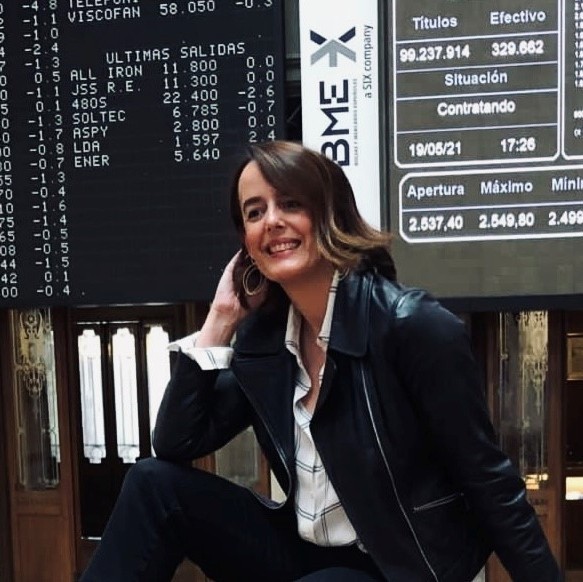FLASH FRIDAY is a weekly content series looking at the past, present and future of capital markets trading and technology. FLASH FRIDAY is sponsored by Instinet, a Nomura company.
The history of cinema is filled with time travel stories. Perhaps few are as well-known as Back to the Future, the 1985 film in which Marty McFly traveled aboard the DeLorean. Today, technology is, in a way, the flux capacitor that allows time travel in financial markets.

When that legendary movie was released, Spain was still four years away from launching the pioneering electronic stock market interconnection system. Until then, all companies listed on the stock exchange were in the “à la criée” market, meaning they were traded in the old-fashioned way, with live shouting of “I’ll take it” or “I’ll give it” for buy and sell orders. On the occasion of the 175th anniversary of the Palacio de la Bolsa, there was an opportunity to see some recorded images of the trading floors in the eighties. It is curious to see the frenetic activity of a completely face-to-face model, complex but very efficient for the scale of the moment.
Since then, driven by continuous technological improvements, we have experienced years of frenzied change, a rushed journey into the future.
There came a point when the incessant increase in orders made the live auction model unviable, and it gradually disappeared. Today, all orders are digital and are traded on platforms that are constantly squeezing themselves to gain microseconds of time that allow faster access to market members. The first electronic market was launched in 1989 with a group of seven large-cap stocks. By the end of the year, it had grown to 51 stocks, and in a few years, digitization was complete in the Spanish market. Since then, the market has not stopped incorporating improvements.
Capital markets are the engine of the financial sector. Many of the technological improvements that markets have incorporated in recent years are aimed at increasing security and reducing processing times. A huge amount of investment has gone into mitigating the cybersecurity risks that have increased in recent years, and we have gone from measuring in minutes to measuring in microseconds. In the time when efficient traders of the past shouted their “I’ll take it” or “I’ll give it,” thousands of transactions are now negotiated.
Technology is also transforming the way investors interact with financial markets. All roles in the sector have been digitized and demand fast and intuitive access, interoperability, and greater transparency in data, business conditions that facilitate informed decision-making.
The financial sector is one of the fastest to react to any technological innovation that can bring benefit. We are not even capable of imagining how far we will go with all this because it is evolving very quickly. From central bank digital currencies to financial transactions using quantum computing, some very disruptive changes are already underway.
Furthermore, technology is also contributing to a change in mentality among all actors in the financial markets, including regulators and, of course, market infrastructure. Technology speeds up the world and forces everyone to keep up with its pace. It is not an option to stay behind.
And with all of this, technology allows us, in a somewhat paradoxical way, to return to the essence, to the principles. We have the necessary technological capabilities to enhance the closeness that has always characterized the Stock Exchange and allows us to recreate in some way those trading pits of the past. The trading pits 2.0. – the virtual trading pits. Far from the caricature of technology as the cause of a certain coldness in personal and work relationships, it is a fact that it actually facilitates contact and eliminates distances.
Ultimately, the important thing is that throughout this journey, the essence of the Stock Exchange remains as a place where people who promote business projects come together with others who trust them and want to invest. Bigger, faster, more efficient, and better, but with the same objective. To achieve this, the financial markets must facilitate and promote these changes that build the future, so that no one can tell us, as in a scene from Back to the Future, “I guess you guys aren’t ready for that yet. But your kids are gonna love it.”
Berta Ares is Head of Programs & Innovation Office at SIX.
Feature photo from DepositPhotos.com — DMC De Lorean from Back to the future on exhibition at the annual italian convention of Star Trek. — Photo by claudiocaridi.libero.it2








